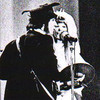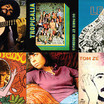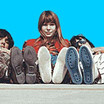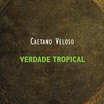Ruídos pulsativos

Musical Heirs
TROPICALIA AND THE XXI CENTURY
Jorge Mautner
As I have already declared in my two essay books, “Panfletos da Nova Era” edited in l978, and “Fragmentos de Sabonete” edited in l974 and reedited in l994 by Relume Dumará, the Tropicalismo is full and plenty of cultural descendants, sons, daughters, grand-children and great-grand-children in almost all cultural activities of this continent-country.
Nothing better than bringing concrete examples when we write an article about ideas; therefore, I want to start this article about the continuity of Tropicalismo in our culture with the following fact I experienced during Carnival, in l998, in Salvador, when people were precisely celebrating the 30th anniversary of Tropicalismo.
It was Ash-Wednesday, and I, together with many artists, was on top of a trio eletrico (a vehicle loaded down with loud-speakers, on top of which musicians play carnival songs while carnival celebrants jump around it) specially built for this celebration. On Ash-Wednesday, according to the Bahian tradition, not only carnival goes all through the night but it is also the chosen day for the legendary trios eletricos encounter.
This all happened, we have to remind the reader, in a magnificent scenery from where it is possible to see the Itaparica Island, under an extraordinary tropical sunset, right in the middle of Castro Alves square! So, there was I, on top of the Tropicalismo trio eletrico which, during all those carnival days, had been manned by Gilberto Gil and Caetano Veloso, with the presence of many famous artists, parading, singing and dancing through the streets of “Black Rome”, but, precisely on that Ash-Wednesday, during the mentioned trios eletricos encounter, had only on the command of Gilberto Gil, because Caetano Veloso for some reason was not there on that moment, when the most awesome thing happened.
Carla Perez manned one of the trios eletricos, frantically shaking her hips to the frenetic rhythm of the drums of the so-called axe music. Tropicalismo’s trio eletrico, manned by Gilberto Gil, was almost in front of it, from which top Dominguinhos and I awesomely looked at each-other: Gilberto Gil was sending innumerous kisses to Carla Perez. Suddenly, Carla Perez started to declare all her love for Gil, Caetano, Tropicalismo, declaring herself a daughter and a direct descendant of the movement.
When Carla Perez stated these words in that exuberant and magnificent scenery, Gilberto Gil sent more kisses to her and I could see tears in his eyes. Tears of pure emotion and thankful appreciation in the eyes of a Gilberto Gil as touched as Carla Perez.
I am saying say that right away, in the beginning of this article, so that the amplitude and extent of Tropicalismo’s influences gets pretty clear in today’s context. It ranges from the most sophisticated to the most popular contemporaneous musical and behavioral styles. It is also important to notice the existence of prejudice still strongly settled among Tropicalismo’s own followers referring or concerning to one or another way of expression. For instance: when I tell many of Caetano and Gil’s absolute fans about the encounter of the trios eletricos in Salvador, with Carla Perez declaring that she was Tropicalismo’s daughter and Gil thrilled, sending kisses to her and crying of emotion, they scowl and say that this is impossible. Why? Well, because they belong to the other extremely rich trend of Tropicalismo’s influences which, unlike axe music (which some journalist friends of mine from Folha de São Paulo call “ass music”, in a disdainful and politically incorrect way) are like Arrigo Barnabé or Miguel Wisnik, let us say, who continued Tropicalismo towards its ultra sophistication, the thing of the composer himself becoming a decomposer, in short, the trend that with Morelenbaum has equal rights to exist under the Tropicalista democracy.
As a matter of fact, I would say that Tropicalismo is like the current regime of Communist China, which has two decrees, two words of order: the first: one government and two systems. Therefore, one Tropicalismo and two opposed simultaneous tendencies. And the second: becoming rich is glorious.
I would say, thus, as Nelson Jacobina well reminds us, that the influence of Tropicalismo ranges from the academic, formal, concrete (from the Concretism of Campos brothers) field to Hélio Oiticica’s (whether a hero or a thief) marginalized one, Antonio Risério’s Historicism, Rogério Duarte’s revisited Buddhism, Tom Zé’s northeastern Dadaism, José Agripino de Paula’s pan-Americanism, Walter Smetack’s Eubiose mysticism, Antonio Cícero’s neo-positivism, up to Jorge Mautner’s sharp Kaos existentialism.
In the day-by-day and night-by-night battles and musical contact with the south-east-north-west musicians of this country-continent, I have had enough experience to affirm and condense their statements which can be summarized in two symbolic abstractions which would sound more or less like this: I am very young and my music is directly influenced by Tropicalismo and I love Gil and Caetano. Or, otherwise: I am too young and my music, though I deny it, is influenced by Tropicalismo, and I hate Gil and Caetano. Do I hate them because, even so, they influence me? I am not going to mention names and places so that this does not become a fight. But I swear that these are the facts. Even Jards Macalé (a very good friend of mine and a superb artists, essential to Brazil of all times), who makes a real almost-hate campaign against Gil and Caetano in musical, aesthetic and personal terms, is, from my point of view, totally influenced and turned feasible as a musician and a person because of Tropicalismo.
Therefore, I reaffirm, one cannot escape from Tropicalismo. It is like the eternal and devouring mother’s love.
I will finish by almost repeating what I say in my next book called “Mobatalá ò Século XXI, Mobatalá com todo o ouro de Oxum!!!!” where I register the more than scandalous event that is shaking the U.S.A. For it is the first time that the U.S.A. do not absorb a culture into their remarkable melting pot of cultures. It happens that, to the astonishment of Time Magazine journalists themselves, Latin American culture is not absorbed by the traditional melting pot, but, on the contrary, assures itself as a preponderant and dominant culture. From soul food, Latin love, Ricki Martin on the parades, being Latino is chic, it means knowing how to live, it is, thus, the quintessence of living fruition. And who else is going to be the quintessence of the Latin American culture other than Brazil and its Tropicalismo? It is not by chance that Caetano Veloso is considered by the New York Times as the founder of one of the biggest and most important cultural movements of the century, as well as one of its greatest poets. And the same goes to my comrade and eternal friend Gilberto Gil, also considered as a kind of universal Latino Chuck Berry, which, in these North-Americans’ world must be a complete compliment. Only I, the Creator of Kaos with K which came before all of that, know that Tropicalismo, however, is still much more than everything that has been said around here.
Tropicalismo’s influence spreads towards all arts, not only the musical, but the cinematographic, choreographic, culinary, plastic, environmental, etc. The next chapter of this huge tropical action will be its worldwide influence in the beginning of this XXI century in which Brazil will have its great importance in the spectrum of universal culture because of this Tropicalismo which actually is, from my point of view, the popularization and the expansion towards the mass culture of the ideology created from the Modern Art Week of l922 on, in the São Paulo of Universal-Brazil.
I was discovered by Paulo Bonfim and Vicente Ferreira da Silva, whom Oswald de Andrade referred to as Brazil’s only and deepest thinker. I was called, by Gil and Caetano, the predecessor of Tropicalismo. It is clear, thus, the reasons why I have extraordinary and lifelong relationships with Tropicalismo and modern art.
Tropicalismo is democracy in the arts.
25 de fevereiro 2000
Rio de Janeiro Brasil-Universal
Exclusive for Tropicalia website.






















